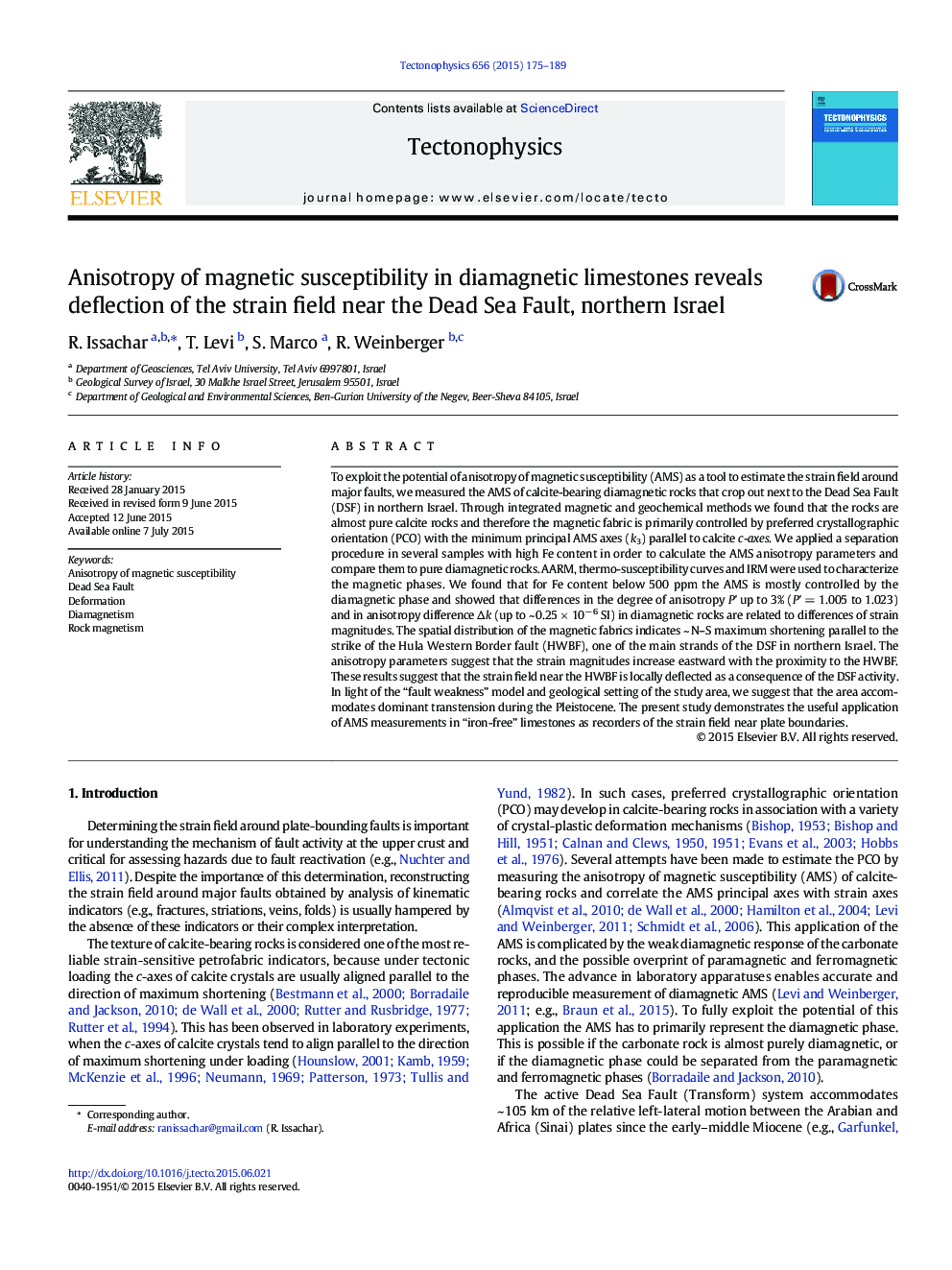| کد مقاله | کد نشریه | سال انتشار | مقاله انگلیسی | نسخه تمام متن |
|---|---|---|---|---|
| 4691609 | 1636739 | 2015 | 15 صفحه PDF | دانلود رایگان |

• AMS of limestones with Fe content < 500 ppm is controlled by a diamagnetic phase.
• Diamagnetic fabrics are induced by preferred crystallographic orientation (PCO) of calcites.
• PCO-based AMS shows directions of maximum shortening near the Dead Sea Fault (DSF).
• Directions of maximum shortening are deflected near a major DSF-strand in northern Israel.
• Differences in anisotropy parameters are related to differences in strain magnitudes.
To exploit the potential of anisotropy of magnetic susceptibility (AMS) as a tool to estimate the strain field around major faults, we measured the AMS of calcite-bearing diamagnetic rocks that crop out next to the Dead Sea Fault (DSF) in northern Israel. Through integrated magnetic and geochemical methods we found that the rocks are almost pure calcite rocks and therefore the magnetic fabric is primarily controlled by preferred crystallographic orientation (PCO) with the minimum principal AMS axes (k3) parallel to calcite c-axes. We applied a separation procedure in several samples with high Fe content in order to calculate the AMS anisotropy parameters and compare them to pure diamagnetic rocks. AARM, thermo-susceptibility curves and IRM were used to characterize the magnetic phases. We found that for Fe content below 500 ppm the AMS is mostly controlled by the diamagnetic phase and showed that differences in the degree of anisotropy P' up to 3% (P' = 1.005 to 1.023) and in anisotropy difference Δk (up to ~ 0.25 × 10− 6 SI) in diamagnetic rocks are related to differences of strain magnitudes. The spatial distribution of the magnetic fabrics indicates ~ N–S maximum shortening parallel to the strike of the Hula Western Border fault (HWBF), one of the main strands of the DSF in northern Israel. The anisotropy parameters suggest that the strain magnitudes increase eastward with the proximity to the HWBF. These results suggest that the strain field near the HWBF is locally deflected as a consequence of the DSF activity. In light of the “fault weakness” model and geological setting of the study area, we suggest that the area accommodates dominant transtension during the Pleistocene. The present study demonstrates the useful application of AMS measurements in “iron-free” limestones as recorders of the strain field near plate boundaries.
Journal: Tectonophysics - Volume 656, 12 August 2015, Pages 175–189